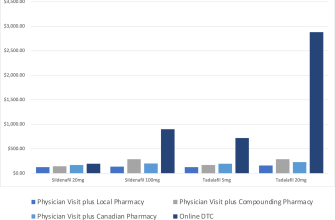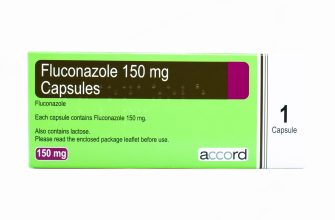Plavix, known for its role in preventing blood clots, does not directly lower blood pressure. Instead, it functions by inhibiting platelets, which can improve blood flow and reduce the risk of cardiovascular events. While it’s not a primary treatment for hypertension, managing blood flow can positively impact overall heart health.
The key benefit of Plavix lies in its ability to enhance circulation, particularly in patients with existing cardiovascular conditions. By reducing clot formation, the medication decreases the risk of heart attacks and strokes. This indirect effect may alleviate some pressure on the cardiovascular system, but relying on Plavix solely for blood pressure management is not advisable.
For those struggling with high blood pressure, a combination of lifestyle changes and appropriate antihypertensive medications is typically recommended. Diet, exercise, and medications like ACE inhibitors, beta-blockers, or diuretics should be the focus of any blood pressure management plan. Consulting with a healthcare provider ensures personalized care tailored to individual health needs.
- Can Plavix Lower Blood Pressure?
- Understanding Plavix and Its Primary Uses
- The Relationship Between Plavix and Blood Pressure
- Effects on Heart Health
- Monitoring and Recommendations
- Clinical Studies on Plavix and Hypertension
- Key Findings from Research
- Recommendations for Use
- Potential Side Effects of Plavix Impacting Blood Pressure
- Hypotension and Bleeding Risks
- Drug Interactions
- Consulting Healthcare Providers About Plavix and Blood Pressure Management
- Key Questions to Ask
- Monitoring and Adjustments
Can Plavix Lower Blood Pressure?
Plavix, or clopidogrel, does not directly lower blood pressure. It acts primarily as an antiplatelet medication, preventing blood clots by inhibiting platelets from aggregating. While its main role is in cardiovascular disease management, Plavix may indirectly benefit blood pressure control in certain patients by improving overall cardiovascular health.
For individuals at risk of hypertension or those experiencing high blood pressure, managing other factors like diet, exercise, and other medications is crucial. If you are taking Plavix and have concerns about your blood pressure, consult your healthcare provider to discuss appropriate lifestyle changes or additional medications to achieve better blood pressure control.
Regular monitoring of blood pressure remains important, especially for those with existing cardiovascular conditions. Always follow your healthcare provider’s advice regarding medication and lifestyle interventions for optimal heart health.
Understanding Plavix and Its Primary Uses
Plavix, known generically as clopidogrel, acts as an antiplatelet medication. It reduces the risk of heart attack and stroke in individuals with certain heart or blood vessel conditions. This drug prevents blood cells called platelets from clumping together, which is crucial in lowering the chances of clots forming in narrowed arteries.
Primarily, healthcare providers prescribe Plavix for patients who have experienced a recent heart attack or stroke, as well as for those with peripheral artery disease. It is often recommended for patients undergoing procedures like stenting, where the placement of a stent in the arteries can increase the risk of thrombosis.
The efficacy of Plavix is most noticeable in its ability to provide long-term protection against arterial thrombosis. Regular monitoring ensures that the dosage remains appropriate, adapting as needed based on individual health conditions and response to treatment.
While Plavix focuses on preventing clot formation, it’s important for patients to engage in lifestyle changes that support overall cardiovascular health. A balanced diet, regular exercise, and avoiding smoking can enhance the drug’s effectiveness and reduce further risks.
| Use Case | Recommended Condition |
|---|---|
| Recent Heart Attack or Stroke | Reduces future risk |
| Coronary Artery Disease | Prevents clot formation post-stenting |
| Peripheral Artery Disease | Improves blood flow and reduces complications |
Consult with a healthcare professional to determine the appropriateness of Plavix based on individual medical history and current medications. Monitoring for potential side effects, such as bleeding complications, allows for timely interventions. Always pair medication with lifestyle modifications for optimal cardiovascular health.
The Relationship Between Plavix and Blood Pressure
Plavix, or clopidogrel, primarily acts as an antiplatelet medication, reducing the risk of blood clots. While it is not designed to lower blood pressure directly, some studies suggest a potential indirect effect on blood pressure through improved cardiovascular health.
Effects on Heart Health
By preventing blood clots, Plavix may contribute to better heart function and reduced strain on the cardiovascular system. This can lead to a stabilization of blood pressure levels over time. Patients with existing hypertension might experience more consistent readings when on Plavix in conjunction with other antihypertensive medications.
Monitoring and Recommendations
Regular monitoring of blood pressure is essential for patients taking Plavix, especially those with a history of hypertension. Consult healthcare providers for personalized recommendations on maintaining optimal blood pressure levels while using Plavix. Combining this medication with lifestyle changes, such as a balanced diet and regular exercise, can enhance overall cardiovascular health and potentially support normal blood pressure ranges.
Clinical Studies on Plavix and Hypertension
Plavix, or clopidogrel, primarily serves as an antiplatelet medication. Recent clinical trials reveal its secondary impact on blood pressure management in certain populations. Studies indicate a potential mild reduction in systolic blood pressure among patients using Plavix, especially those with existing cardiovascular risk factors.
Key Findings from Research
One notable study published in the Journal of the American College of Cardiology assessed patients with hypertension and a history of cardiovascular events. The results demonstrated that those on Plavix experienced a statistically significant decrease in systolic blood pressure compared to those receiving standard treatment alone. The observed decrease, approximately 5-10 mmHg, suggests that Plavix may offer added benefits beyond its antiplatelet effects.
Another research project focused on diabetic patients also revealed a similar pattern. Participants on Plavix not only showed improvements in platelet aggregation but also maintained better control over their blood pressure levels compared to the control group. This dual action can enhance overall patient management strategies in hypertensive populations.
Recommendations for Use
Clinicians should consider integrating Plavix into treatment protocols for patients with hypertension who also require antiplatelet therapy. Monitoring blood pressure regularly remains essential for assessing the individual response to this medication. Tailoring treatment plans based on a patient’s specific conditions and responses can optimize outcomes significantly.
Always consult with healthcare professionals before making any changes to medication regimens. Continued research will provide further insights into the optimal use of Plavix in hypertension management.
Potential Side Effects of Plavix Impacting Blood Pressure
Plavix, primarily an antiplatelet medication, can lead to various side effects that may indirectly affect blood pressure. Monitoring your blood pressure regularly while taking Plavix is advisable.
Hypotension and Bleeding Risks
One notable concern is the risk of bleeding, which can arise from Plavix usage. Significant blood loss may result in hypotension, characterized by lower than normal blood pressure levels. If you experience unusual bruising, severe headaches, or gastrointestinal bleeding, consult your healthcare provider immediately.
Drug Interactions
Interactions with other medications can also influence blood pressure. Combining Plavix with certain antihypertensives might enhance or inhibit their effects, leading to fluctuations in blood pressure. Discuss your complete medication list with your doctor to prevent adverse outcomes.
Staying vigilant about these potential side effects helps maintain optimal health while using Plavix. Regular check-ins with your healthcare provider contribute to safe and effective management of your treatment plan.
Consulting Healthcare Providers About Plavix and Blood Pressure Management
Discussing Plavix with your healthcare provider is essential for managing both your cardiovascular health and blood pressure effectively. Start by preparing specific questions regarding how Plavix interacts with your current medications and its potential effects on your blood pressure.
Key Questions to Ask
- How does Plavix affect blood pressure in my specific situation?
- Can I take Plavix alongside my current antihypertensive medications?
- What side effects should I monitor while taking Plavix?
- Are there alternative treatments you recommend for managing my cardiovascular condition?
Always share your complete medical history, including any hypertension diagnosis and your lifestyle habits. This information helps your provider tailor the best approach to your health.
Monitoring and Adjustments
Regular check-ups are critical. Your provider may suggest monitoring your blood pressure more frequently after starting Plavix. This way, they can make timely adjustments if needed. Keep a log of your readings to discuss during appointments.
By engaging in open dialogue with your healthcare team, you can create a united approach to treatment that considers all aspects of your health, including the role of Plavix in managing your blood pressure effectively.








